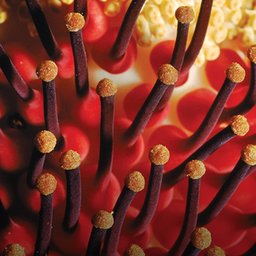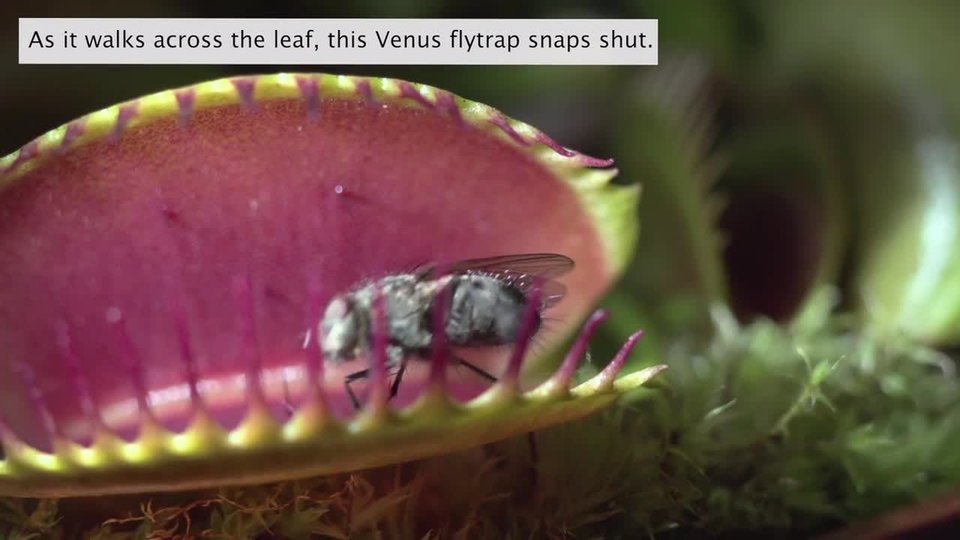
Thecorpseflower’slargebloomattractscertainkindsofpollinatorswithitsbad smell.
BigStink
Intherichsoilofarain forestinSumatra,arareflowerisabouttobloom.Ithasbeengrowingfornineyears.Theblossomwillonlyopenfor48hours.Itneedstobepollinatedduringthat time.
Theflowerbeginstounfurl.Insideitiswarmanddeepred.Butit’sthesmellthatyounotice.Thetitanarumplant,alsocalledthecorpseplant,isthesmelliestbloomontheplanet.Itsbadodoradvertisesafreemeal.It’sirresistibletoinsectsthatfeedondeadthings.Theylandontheflower.Thentheypollinateitastheywanderaroundlookingfor food.


TheVenusflytrap’sleavesarelinedwithtriggerhairs.Theysnaptogethertotrap insects.
TheNeedforSpeed
Aflashofredcatchesafly’sattention.Asweetsmellsuggestsfood.Theflylandsonthesticky,redsurface.Thisisactuallytheinsideofahinged leaf.
Beforetheflycanflyoff,theleafsnapsshutlikeamouth.Thespikyedgesoftheleafactlikeafence.Theflystruggles,butit’snouse.IthasbeencaughtbyaVenusflytrap.And,it’sonitswaytobeing eaten!
Likemanyplants,a Venusflytrapgathersnutrientsfromsoilandair.But,theseplantsliveinpoorsoil.Theycan’tgetthenutrientstheyneed.So,theyfeedthemselvesbyeatinglive prey.
Theplant’sleavesarehingedlikeaclamshell.Insidearestiffhairsthatsensemotion.Whenaninsectmovesacrossonehair,nothinghappens.Butwhenasecondhair istouched,theleafsnapsshut.Theinsectis trapped.
Theplant’sdigestivejuicesthenbreakdownthesoftpartsoftheinsect.Afternutrientsareabsorbed,theleafopens.Theunwantedpartsfall out.



